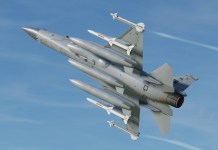Amid the global pandemic, as Sri Lanka battles the COVID-19, it is moving towards another looming crisis – the Chinese Debt Trap, that is servicing its debt due this year.
Beijing granted a loan of $500 million as a bailout to fight the COVID-19 pandemic when Sri Lanka’s foreign reserves diminished to $7.2 billion in April. Last week, another decision to borrow 15 billion Sri Lankan rupees ($80 million) from the China Development Bank was approved by the cabinet ministers. This loan is intended to be used to improve 105 kilometers of roads in the country.
The world is looking at a financial crisis and this decision to avail a loan is slammed by the critics of Sri Lanka’s government considering that the country is already debt-ridden with a huge amount of loan from China.
“Such projects are not priorities for the moment. This loan is just to improve roads already built, and we can always improve the roads later,” said Harsha de Silva, Former minister for economic reform.
Earlier, Sri Lanka had relied heavily on China to construct $1.5 billion port in Hambantota in the country’s south. After the port was operating at a loss and couldn’t generate enough revenue to repay the loan to Beijing, the port was leased to China for 99 years in return for $1.1 billion which eased its position.
According to the estimates by the International Monetary Fund (IMF), Sri Lanka’s net government borrowing, which combines the fiscal deficits of the central and regional governments, will rise to 9.4% of the gross domestic product in 2020, up sharply from last year’s 6.8%, due to the economic impact of the epidemic.
In February, IMF conducted a visit to Sri Lanka to discuss the economic reforms agenda with the authorities. After the visit, the IMF concluded that the economy is gradually recovering from the terrorist attacks last April.
Real GDP growth was estimated at 2.6 per cent in 2019. The recovery is supported by a solid performance of the manufacturing sector and a rebound in tourism and related services in the second half of the year.
High-frequency indicators continue to improve and growth is projected to rebound to 3.7 per cent in 2020, on the back of the recovery in tourism, and assuming that the Novel Coronavirus will have limited negative effect on tourism arrivals and other economic activities.
Last month, Sri Lanka’s currency fell at an all-time low of 200.6 rupees to a dollar. Subsequent to this, the Finance Ministry restricted the imports of 156 items including alcohol, food and apparel in April.
China’s ambassador to Sri Lanka, Hu Wei at a meeting with President Rajapaksa said that China is keen to help and would help “revive” the economy because Sri Lanka is a “special friend”. Rajapaksa responded by saying that “there are ample opportunities for foreign investments. … I invite China and other countries to make use of those opportunities”.
“We are also confident that countries such as China and Japan will provide us with much-needed space due to the current situation,” said Ramesh Pathirana, a cabinet spokesman.




